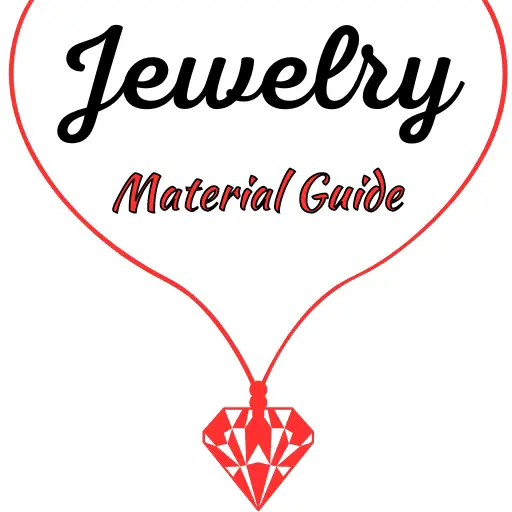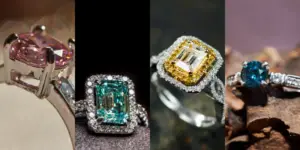When looking for a light blue gemstone to set in jewelry you’re likely to be faced with a decision: should it be aquamarine or blue topaz ? Both are very well known for their colors and clarity. Choosing between the two can prove difficult, so let’s compare them, see which would work best for your situation.

Blue topaz vs aquamarine
Blue topaz is more affordable and more common than aquamarine, with a more intense shade of blue that ranges from light blue to deep, inky London blue. Aquamarine always has a lighter color than blue topaz, and it’s the birthstone for March, while blue topaz is the birthstone for December.
Both gems are treated for better color, but blue topaz has had its color completely changed from clear or pale yellow to blue, while aquamarine simply enhances the existing color (light blue to more intense).
What is blue topaz ?
Blue topaz is a variety of topaz, and natural blue topaz is extremely rare. Topaz commonly grows into clear crystals, or pale yellow ones. The blue topaz you see on the market is always the result of a heat and radiation treatment applied to colorless topaz. And, since it’s pretty abundant, that’s all you’re going to find: blue topaz, of various shades. If you want a different color you will have to go to a jeweler to help you source one.
What is aquamarine ?
Aquamarine is a type of beryl, the light-blue sibling of emerald and morganite. This gem is very well known for its clarity, icy blue color, and slight green undertones. The very name comes from ‘aqua’ meaning water and ‘marine’ meaning sea, as it was thought to resemble shallow sea shores.
Read also: Tanzanite VS Sapphire
1. Blue topaz has a wider range of blue than aquamarine
When it comes to color aquamarine and blue topaz have quite a few differences. While both are light blue, they do it differently. Blue topaz’s light blue is usually more saturated than aquamarine, going from icy blue to sky blue to Swiss blue (almost neon blue) and all the way to London blue (mid-saturation inky-blue with silver flashes). The most common color for blue topaz is Swiss blue or neon blue. London blue is rarer and more expensive.
Meanwhile aquamarine is a very clear, crisp color with little saturation. It’s best described as icy blue with a slight green tint to it. Aquamarine doesn’t have such a wide range of color as blue topaz, though it can be just as impressive.
2. Aquamarine is more expensive than blue topaz
Aquamarine is always going to be more expensive than blue topaz, because topaz is common and easy to treat to get a blue color. The gem market is full of blue topaz gems, to the point where you can buy Swiss blue topaz (the most common) for as little as $7 per carat. London blue sells for more, usually around $12 per carat.
Meanwhile aquamarine sells for $300-500, depending on color saturation, clarity, and how well the gem is cut. You can get aquamarine for less – such as $200/ct – but those will be of poorer quality in tome way. Poor color, clarity, cut, or something of the like. Another way to get cheap aquamarine is to get simulated or lab-grown aquamarine, which sells for as little as regular blue topaz.
This is a steep price difference, and it stems from a key point: topaz, as a base material, is easy to find and cheap, and easy to turn blue. Aquamarine is only treated to enhance an existing color (like sapphires).
3. Blue topaz is heavier than aquamarine
If you ever find yourself contemplating a larger gem, you should know that blue topaz weighs more than aquamarine. This is because blue topaz, or rather any topaz, has a density of 3.5 gr/cm3, while aquamarine has a density of 2.7 gr/cm3. So blue topaz is about 25% heavier than aquamarine, meaning a 1 carat piece will look smaller than a 1 carat aquamarine.
When buying large amounts of gems, remember that blue topaz is heavier so you will end up with fewer than if you bought aquamarines. But given aquamarine’s price range it would be more cost-effective to get a 10 ct blue topaz that looks like 12 ct aquamarine, than to pay for 12 ct aquamarine.
This starts to matter more when the gems involved are very small, such as .5 ct gems in a tennis bracelet. Half carat blue topaz will look a bit smaller than aquamarine so be warned.
4. March vs December birthstone
Still not sure which gem to pick ? Take a look at your birth month. Each month has at least one gemstone assigned, are these two gems each belong to one. Aquamarine is March’s birthstone, while blue topaz is one of December’s birthstones.
If you’re born in March or have strong ties to the month of March (child born in March, engagement, wedding, significant event) then aquamarine might sound better for you. Similarly, if you’re a December person then blue topaz might sound better.
In may not matter a lot, but it helps to make one of the gems more personal to you, and help you choose.
Similarities between aquamarine and blue topaz
There are some similarities between blue topaz and aquamarine that make choosing between the two kind of difficult. This is because blue topaz are similar in all the ways that matter (except price range). So take a look.
Both aquamarine and blue topaz are treated for better color
If a natural color gemstone is what you’re looking for, neither blue topaz nor aquamarine will be it. Both gems are treated for better color, and both gems will have ‘heat or radiation treatment’ on their certificate of authenticity.
This is because aquamarine usually comes out of the earth looking a bit, well, pale. Very pale, nearly white. Very good color natural aquamarine is rare, and way more expensive than treated aquamarine. So, you will find that almost all gems are heat-treated to get a deeper color. This is the same process that is applied to sapphires to make all of them deep blue.
Meanwhile blue topaz takes things up a notch and turns completely colorless topaz (sometimes pale yellow) into various shades of blue through a combination of irradiation and heating. The gems are safe to handle after their initial radiation has halved, which takes several weeks.
Is there such a thing as natural blue topaz ? Yes, but you guessed it, it’s rare. And especially rare to be a bright, well saturated color. The most common blue color you’ll find for blue topaz are Swiss blue (neon blue) and London blue (deep, mid-saturation blue with hints of grey).
Aquamarine and blue topaz are of similar hardness
When you pick a gemstone to set in jewelry you’re eventually going to wear that gem to this or that event. Possibly every single day. Well, aquamarine and blue topaz are very similar in hardness. This is measures on the Mohs scale, which is a scale from 1 to 10 with diamonds being at the top of the scale (10).
Aquamarine is a 7.5-8 while topaz is an 8. This means both are pretty hard gems, won’t scratch very easily but may still get a bit cloudy after several years of everyway wear and tear. So really, there is no real reason to pick one gem over the other, as far as hardness is concerned. Both will behave pretty much the same in time.
Can you use blue topaz instead of aquamarine ?
Yes, you can use blue topaz in place of aquamarine as they’ve got a very similar color range and you end up paying far less for blue topaz. We recommend sticking to icy blue and sky blue topaz as aquamarine replacements. Some swiss blue topaz can get too bright, and London blue topaz is a very recognizable color, it can’t pass for aquamarine.

I’m the main author for jewelrymaterialguide.com. I started this site after we did tons of research before our wedding and noticed that there is information about rings, jewelry, and so on that is really hard to find on the internet.






